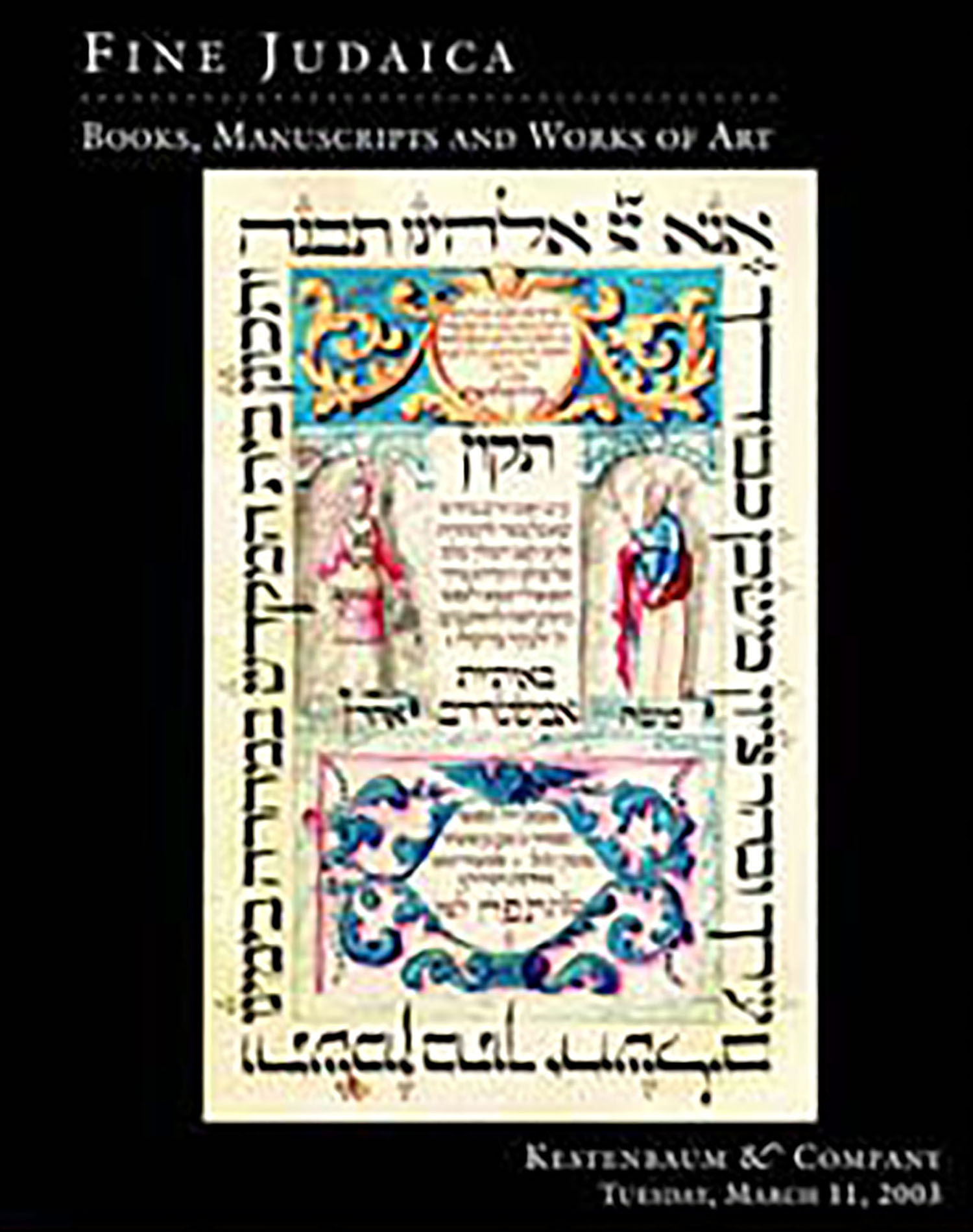(KETHUBAH). Marriage Contract, on paper. Uniting Rachel Louzada (? -1790), daughter of Hannah and Moses and Haym Myers (? -circa 1801) on Wednesday, 1st Tammuz 1751, in New York.

AUCTION 19 |
Tuesday, March 11th,
2003 at 1:00
Fine Judaica: Printed Books, Manuscripts and Works of Graphic Art
Lot 6
(AMERICAN JUDAICA)
(KETHUBAH). Marriage Contract, on paper. Uniting Rachel Louzada (? -1790), daughter of Hannah and Moses and Haym Myers (? -circa 1801) on Wednesday, 1st Tammuz 1751, in New York.
New York: 1st Tammuz 1751
Est: $20,000 - $25,000
ONE OF THE EARLIEST AMERICAN KETHUBOTH EXTANT.
Haym Myers, formally known as Chaim Mears, a native of Amsterdam, began his new life in America in 1750, accepting the position of Shochet to the Shearith Israel Congregation, New York. He took the Oath of Naturalization in 1759 and went into business for himself. Soon successful, he developed strong trading links with Canada. He travelled frequently between Montreal and New York, often away from home for months at a time. In 1763 Myers and family moved to Montreal, but returned to New York following the Revolution. Observant Jews throughout their lives, the Myers had four children, the most prominant of whom was Moses (circa 1752-1835), an outstanding merchant and leader of the City of Norfolk. See: AJHSP, Volume XXVII (1920), p. 150; J. R. Marcus, Early American Jewry (1951), pp. 219-24; J. R. Rosenbloom, Biographical Dictionary, pp. 100, 124-6, 128; and H. Simonhoff, Jewish notables in America (1956), pp. 133-6.
Benjamin Perrayra was Chazan and Shochet to Shearith Israel 1748-57, he subsequantly removed to Jamaica for health reasons. See D. and T. de Sola Pool, An Old Faith in the New World (1955), pp. 614 & 213.
The ornamental cartouche of this Kethubah is an engraving attributed to Shalom d’Italia, used for over 150 years by Sephardic congregations the world over. See M.H. Gans, Memorbook (1971), pp. 114-5.
Provenance:
Purchased from the American Jewish Historical Society and later acquired by the present owner.
